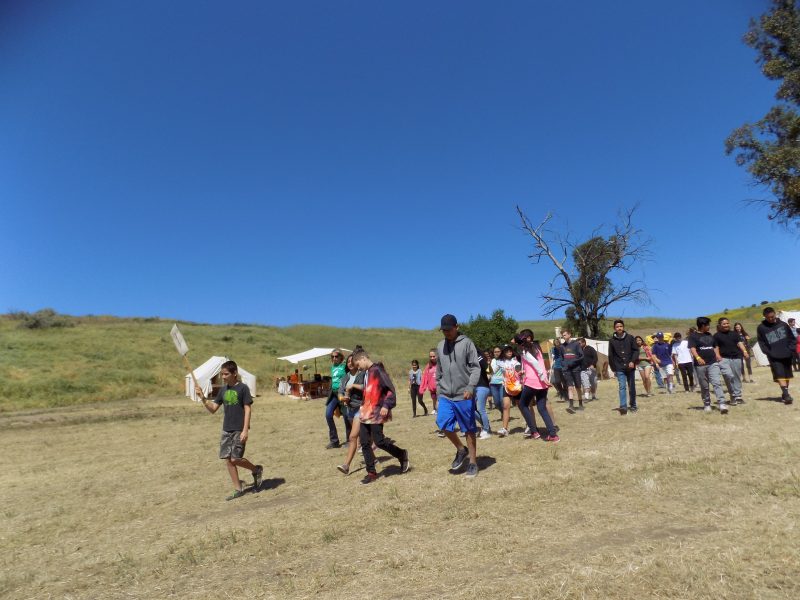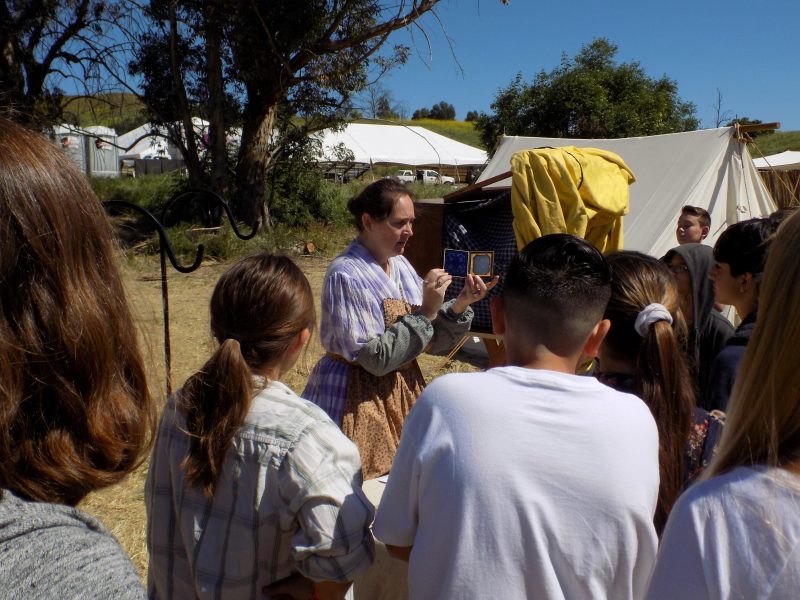Teaching 8th Graders Through Civil War Living History
 How do we teach and inspire the next generation to value history? It’s a question looming in the minds of many in the history field. Museums, National Parks, historical sites, and organizations are trying a variety of ways to engage young folks in Civil War history. At this point, nobody has found the “magic formula” to instantaneously create interest in the past.
How do we teach and inspire the next generation to value history? It’s a question looming in the minds of many in the history field. Museums, National Parks, historical sites, and organizations are trying a variety of ways to engage young folks in Civil War history. At this point, nobody has found the “magic formula” to instantaneously create interest in the past.
Living history and re-enactments have their pros and cons, but they have potential to be powerful tools for engaging young students. A couple weekends ago, I had the opportunity to participate in a special education for eighth graders. Hosted on the Friday prior to a large Civil War re-enactment in Southern California, this education day featured living history “stations” and educated about five hundred students about a variety of Civil War topics. Some of the students returned later the weekend to ask more questions and discuss their ideas with the other soldiers and civilians at the large event.
I’ve pulled together some of the photos from education day. (My brother took the pictures since I was busy teaching – thanks, Nathan!) The pictures capture the busy energy, fast and informative speeches, and mood of the morning. Hopefully, these images will inspire to continue your historical education efforts, even if it’s just sharing with your kids or grandchildren. And, to all readers who help teach history to the next generation, thank you! It’s so important…
Union and Confederate infantrymen talked about their rifles, bayonets, and bullets. The students could ask about wool uniforms and camp/campaign diets and other aspects of a common soldier’s life during the Civil War.
With his horse as an “ice-breaker,” this Union cavalryman had a perfect platform to teach about tactics, cavalry weapons, horse care, and the horseman’s role during the conflict. (And, yes, the students got to pet the horse!)
An Abe Lincoln interpreter chatted with students to answer their questions about the 16th President. Hearing his recitation of the Gettysburg Address was a highlight for many teachers and kids.
A lady-photographer shared about the history of Civil War images. Lucky students got to peek through the camera lens!
Cover your ears! It just doesn’t get anymore exciting than shouting “fire” and hearing a cannon explosion. The artillery station is always a favorite at this education day.
At the “McGuire Home, Winchester, Virginia,” my mom and I shared about the civilian experiences in Virginia, a brief history of the 1862 Shenandoah Valley Campaign, and a short anecdote about General T.J. Jackson.
Happy educating and story-telling! May we find a successful way to continue sharing the accounts from the past in ways that will positively shape the future.






Have the students identify those civil war participants that were support staff. Like James Henry Jones and Frederick Mc Ginnis and the ten men who stayed loyal to Jeff Davis thru his capture.Its exciting to discover that many of them lived into the 1900’s.
That’s a good idea.
Im doing this type research myself and its fun. The role of the body servant (cooks,wagon drivers, attendants,etc) is very interesting and i have found living descendants of many of my researched individuals.Keeping it alive and focused on those who very little is written about is inspiring.
A large number of Confederates moved to California after the war and some became prominent in state politics. One Confederate general buried in California is Tyree Bell, a brigadier under Nathan Bedford Forrest. The post-war careers of these men and their contributions to California should be studied.
Shhhhh! If I ever finish the Ellsworth book, that one is next!!
our book on the Coleman Scouts of the Confederacy that is entitled ” Shadow Soldiers of the Confederacy”. They operated in middle Tennessee and is available on amazon.com. One of my relatives was a member and i was able to met some of the relatives of various soldiers.
I must admit, this looks like more fun than teaching how the rules relating to the angles in triangles influence finding unknown angles in geometric constructs . . .